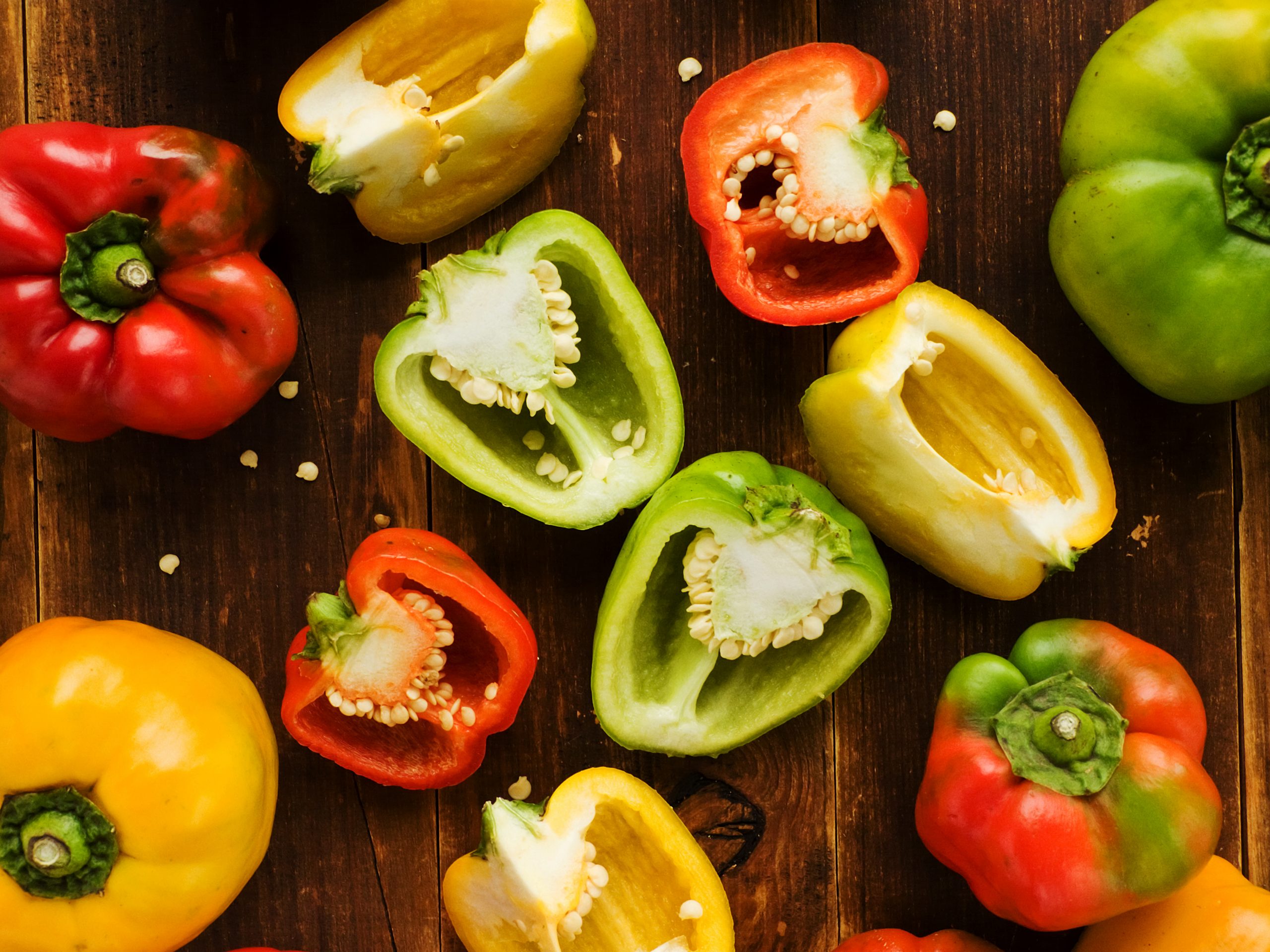
Focus on greenhouse construction and safe operation
24 July 2020
Understanding the market opportunity for vegetable juices
22 July 2020Project VG10081 was completed by Des McGrath and Denis Persley from the Queensland Department of Agriculture and Fisheries in conjunction with Syngenta Seeds.
Tomato spotted wilt virus and capsicum chlorosis virus belong to a group known as ‘tospoviruses’, which cause significant crop damage in the largest capsicum production areas of Queensland, with typical annual crop losses of $15 million. In South Australia, tomato spotted wilt virus is responsible for major losses in the protected cropping industry.
While tomato spotted wilt virus is more widely distributed throughout Australia, capsicum chlorosis virus is prevalent in Bundaberg and the northern Dry Tropics of Queensland, to the extent that it can become the predominant virus at certain times through the season.
The effect of tospovirus on capsicums is profound. To a consumer’s eye, the virus distorts the shape of the fruit as well as scarring its skin and reducing its size, which ultimately reduces marketable yield.
About the project
In recent years, Queensland Department of Agriculture and Fisheries (DAF) Principal Horticulturist Des McGrath and Principal Plant Pathologist Denis Persley were able to identify genetic resistance to tospovirus in bell capsicums. This was undertaken as part of the project Capsicum breeding for tospo virus resistance (VG02035), which concluded in 2007.
“We identified some resistance in uncultivated germplasm; these were wild species that were totally unsuited for commercial production,” Mr McGrath said.
“However, we identified the resistance and some of the genetics behind it, and we were then able to transfer that resistance into breeding lines of ordinary bell capsicums.”
This led to the project Breeding Capsicum for Tospovirus Resistance (VG10081), which allowed Syngenta Seeds to join as co-investors and offer its breeding material to the project.
There were a number of elements to VG10081, including characterising and identifying the tospovirus and conducting surveys to find out where the virus was active. Conventional breeding work was also completed as well as routine glasshouse assessments of the breeding material. During the project, Syngenta Seeds developed breeding lines (parents) and worked with DAF to identify markers for the resistant gene.
“There was one gene that controls resistance, and a lot of the work in recent times has been directed towards identifying a marker. The purpose of this is to make breeding quicker and simpler, and more efficient,” Mr McGrath said.
“It means that instead of having to physically assess breeding material by seeing which ones are resistant and which ones are susceptible, if you can, by laboratory process, identify the presence of the marker, you know if an individual plant carries resistance. This reduces glasshouse work, which is slower, laborious and painstaking.”
Major findings
Mr McGrath said the project confirmed that the capsicums identified had a very high level of resistance to capsicum chlorosis virus.
“We’ve been able to transfer that resistance into very good parent lines, which will now form the basis of new F1 hybrids,” he said.
“I think it’s clear now that Syngenta Seeds has some very good breeding material that will result in some hybrids before too long. It’s their ongoing assessment and evaluation, and their commercial decision, but I know that based on this resistance they have quite good material now.”
Mr McGrath said that these findings will offer capsicum growers (particularly those in Queensland) better protection from capsicum chlorosis virus.
Conclusion
According to Mr McGrath, the next step is to continue the development of new breeding material in different vegetable commodities.
“This research will allow Syngenta Seeds to put that virus resistance into a broader range of breeding material. It will probably allow additional work to happen in other types of Solanaceae plants like chillies – they’re also susceptible to this virus so there’s obviously scope for ongoing breeding,” he said.
“There will also be continuing genetic work, which is a little bit more theoretical and less applied, but it’s necessary to understand the nature of the resistance and how it can be used in the future.”
The bottom line
Project VG10081 aimed to characterise and identify tospovirus affecting capsicums, including tomato spotted wilt virus and capsicum chlorosis virus. The latter is a highly destructive form of tospovirus which causes significant yield losses for capsicum growers, particularly in Queensland.
The Queensland Department of Agriculture and Fisheries (DAF) worked with Syngenta Seeds on this project to develop capsicum breeding lines (parents) as well as identifying markers for the resistant gene. The process of identifying the presence of the marker is to make breeding quicker, simpler and more efficient.
The project identified that the capsicum varieties tested showed a very high level of resistance to capsicum chlorosis virus. Syngenta Seeds can use this information to develop its capsicum breeding material, however the outcome will depend on the company’s ongoing assessment and evaluation, and commercial decision. There is further scope to use the results of this project for breeding in other Solanaceae crops such as chillies, which are also susceptible to capsicum chlorosis virus.
Further information
For more information, please contact Denis Persley on 07 3708 8488 or at denis.persley@daf.qld.gov.au. The final report for this project is available on InfoVeg.
VG10081 was funded by Hort Innovation (then Horticulture Australia Limited) using the vegetable research and development levy, voluntary contributions from the Queensland Department of Agriculture and Fisheries and Syngenta Seeds Australia Limited and contributions from the Australian Government.
This article first appeared in Vegenotes 64 – January/February 2018. You can download the publication here.

